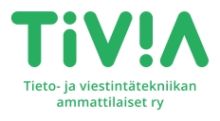Frends Product Demo – what is it, why does it matter, and what to expect?
What is a Demo?
Usually, a demo meeting with Frends for a potential customer is an interactive session consisting of a user interface walkaround showcasing the built-in capabilities and functionalities. If the audience wants to see also how to develop integrations with Frends, we usually implement a concrete integration use case. With this demonstration, we show a potential customer that the development with the Frends platform is fast and efficient.
Furthermore, demo implementations also allow us to educatively explain the features, the basic concepts, and different nuances as we go through every step of development in a demo environment.
When do we host a demo for Frends platform?
Whenever a potential customer wants to. We are eager and ready to present Frends in our very first meeting with a potential customer, or when a potentials customer specifically requests a demo session. Sometimes it is more efficient to introduce Frends in action right away rather than going through PowerPoint slides.
Demoing Frends is lean and straightforward: It only requires opening the browser and navigating to a suitable tenant to start building integrations or elaborating on existing integration processes and flows.
Why do we run demos?
Ultimately, a technical demo is crucial to purchasing decision-making and the buyer's journey. Through concrete examples, we can showcase the key capabilities of Frends and discuss the role of business integrations as a whole:
- Fast development cycle
- Standard process notation for every integration
- Built-in logging functionality
- Version control
- A click away deployments
Additionally, people can ask technical, operational, or business questions. We often see people become inspired when they realize the ease of development.
Who runs the demos?
Most commonly, our Pre-sales Architects showcase the Frends user interface. The Pre-sales Architects have prepared demos for different use cases, which should resonate with potential customers and be as realistic and close to real business scenarios as possible.
Read the blog to learn more about the role of Pre-sales architects: A day of Pre-Sales Architect at Frends
What to consider when requesting a demo?
We tailor each of our demos based on a customer profile and requests. We can demo Frends for business-oriented people and present the technical details. So, a customer can involve several team members in the first demo meeting, for example, from Business, Development, or Operations teams.
Our standard demo lasts 45-60 minutes. For the limited time available, it is essential to use it effectively with room for questions and closing conversations. Sometimes we have to cut the demo short and save time for the valuable discussion consisting of practical next steps and any burning questions the audience may have. It is also wise to shift some topics to the next session instead of ramming too much information into one meeting.
Equally important for us is to request a practical use case definition in advance for the upcoming session, as a prepared demo allows us to showcase a more realistic use case with more real-life consumable services in the context of the integration.
We also ask for the "Country" where a company is located to ensure we can cater to potential customers in their language. We can run demo meetings in the English, Finnish, German, Polish, and Swedish languages.
What happens after a demo?
After a demo session and going through some questions and open discussion, the next step would be agreeing to implement a Proof-Of-Concept (PoC). PoC is a step to showcase the capabilities of Frends further and give a customer team development access and implement integrations together with the Frends team.
This part of the customer journey with Frends has been described in a separate blog post which is worth checking out: Frends iPaaS | Proof of Concept - why does it matter?
What is the best thing about demos?
For me, the best thing is when the potential customer sees the value and gets hooked - the flashing light bulb on customers' heads is always a joy to witness. In these situations, it's delightful to help the customer continue their journey with Frends.
One of my favorite stories for a demo is one where the potential customer specified a traditional integration use case:
- Reading a CSV file from a drive
- Transforming the data into JSON
- Pushing it to a REST API
I quickly implemented this demo use case in roughly 20 minutes while explaining and teaching the development with Frends. Eventually, the customer was impressed and wanted to proceed to the Proof-of-Concept phase. Today they are the users of the Frends platform, and their production environment runs a Frends Process that reads a CSV file and pushes the data into a REST API.
What is next?
When you're interested, please contact us, and ask for a demo. We'd love to show you more!
Wrote by: Asser Junnila, Frends Pre-Sales Architect


























































